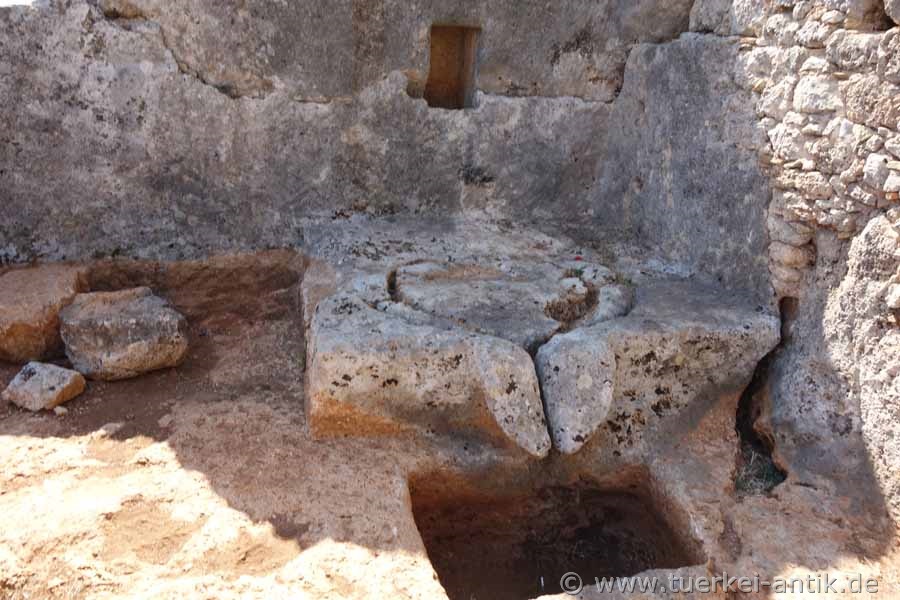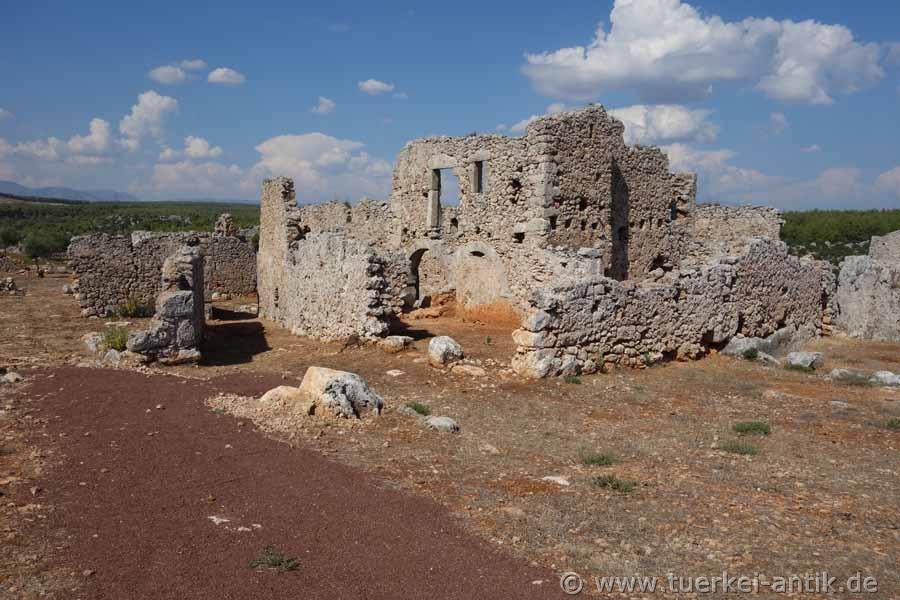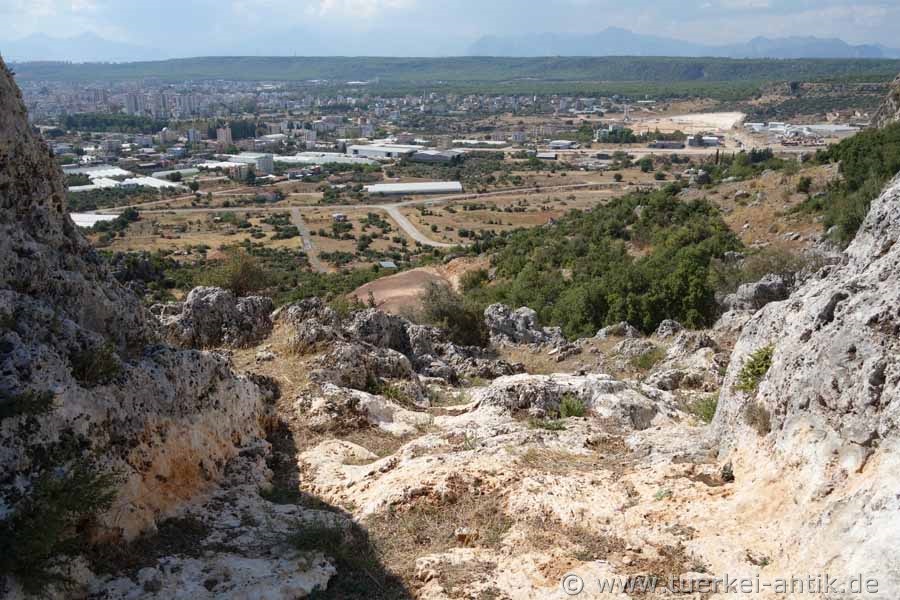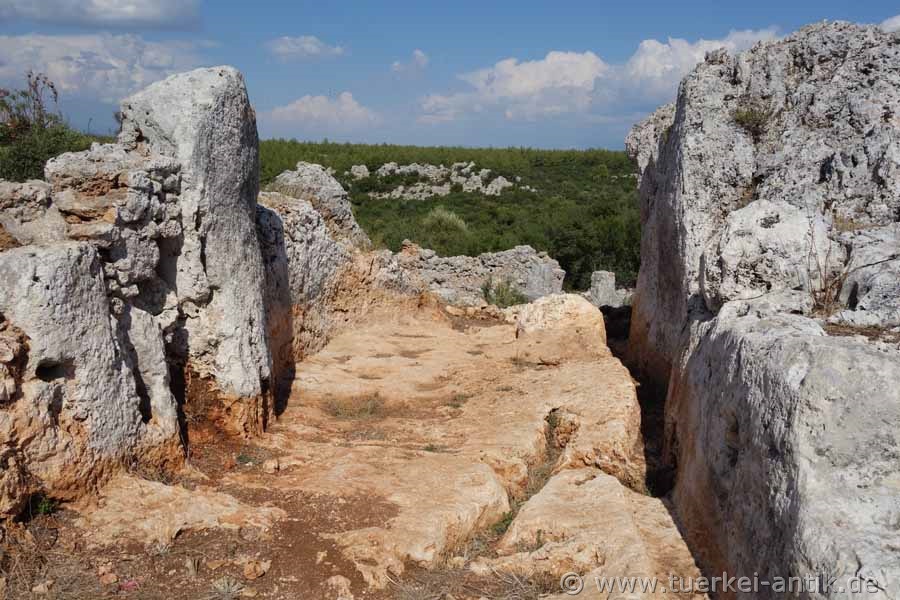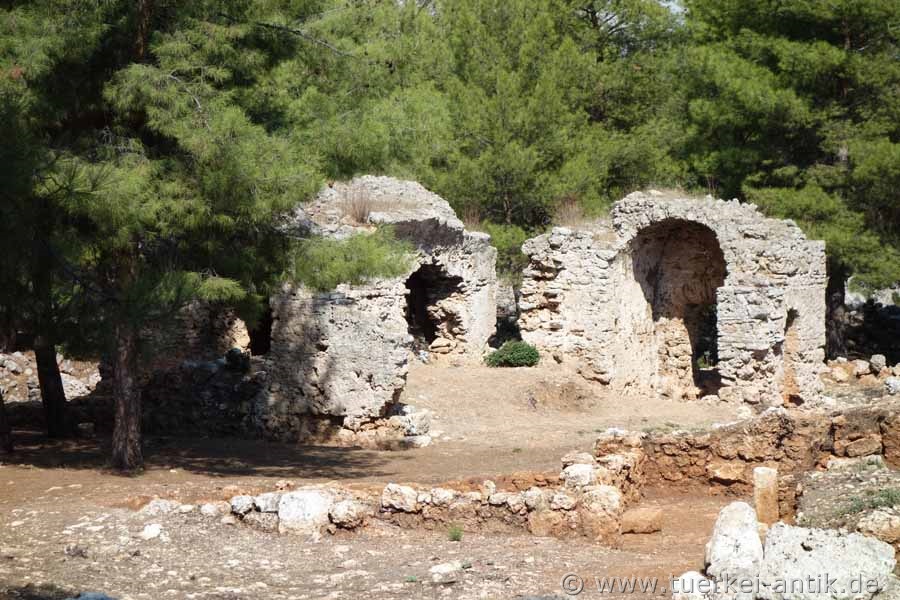 |
| Lyrboton Kome | |||
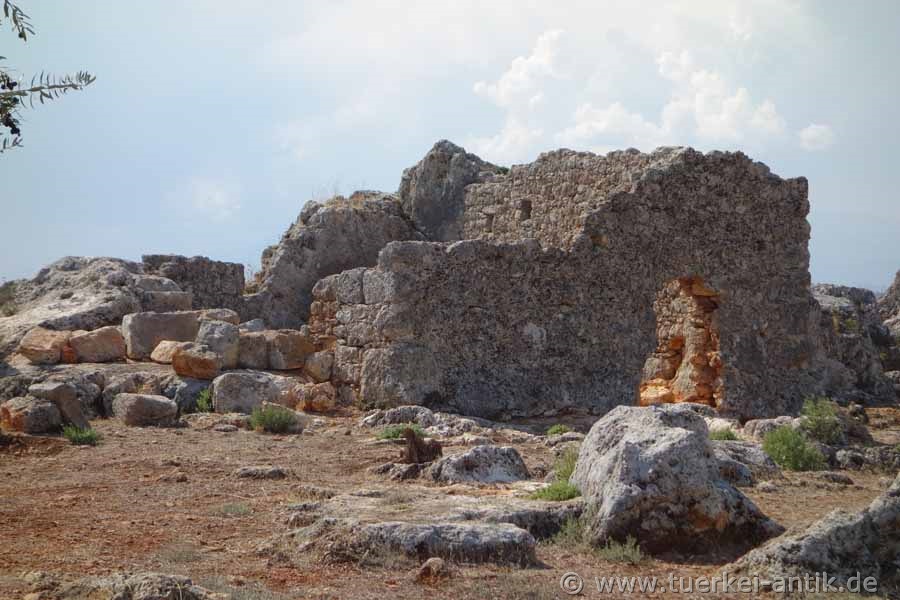 |
|
||
|
Oil mill |
|||
|
The ancient Lyrboton Kome is considered one of the most important olive oil production centres of antiquity. The ruins of the approx. 2,200-year-old village, located on the territory of the town of Antalya above the Varsak district, have been cleared of bushes and undergrowth in recent years and opened to the public in September 2018 by local celebrities. An old footpath, once difficult to walk on, was widened so that it is now easily possible to reach and cross the city by car. You can see the ruins of several oil mills, houses, baths, churches and graves. Plundered for decades by treasure hunters, today it is hoped that the remaining artefacts will be protected in the long term. |
|||
|
|
|||
| Press table of a lever press | |||
|
Lyrboton Kome can be described as a large village under the administration of the town of Perge. It is noteworthy that it was not, as one might assume, connected with the much closer port city of Attaleia (today Antalya), but was under the administration of the city of Perge. The age of the place is estimated today at approx. 2,200 years. The current ruins date from Roman, Byzantine and later times, but there must have been a farm with olive oil production in pre-Roman times. Such farms, called "Baris", originated in Hellenistic times. Inscriptions on blocks of the probably most important building of the place give information about the name of the owner, that it was an important oil production centre and that the building was a tower. They also identify the site as Lyrboton of Perge. |
|||
|
|
|||
|
The inscription on the tower - today it is called Arete-Kulesi - indicates that the owners and lords of the village and the olive groves in Roman times were the brothers Demetrios and Apollonios. Demetrios daughter and Demelers priestess Arete had the tower rebuilt at their own expense to fulfill a promise to the village. She had it covered and dedicated it to the Emperor Caesar Domitian Augustus Germanicus and Artemis of Perge. The original construction of the building dates from the time of Domitian (81-96 AD); the roof was repaired during the reign of Hadrian (117-138 AD). The family, who later moved to Perge, transferred the income from olive oil to Perge and made considerable contributions to the expansion of the town. |
|||
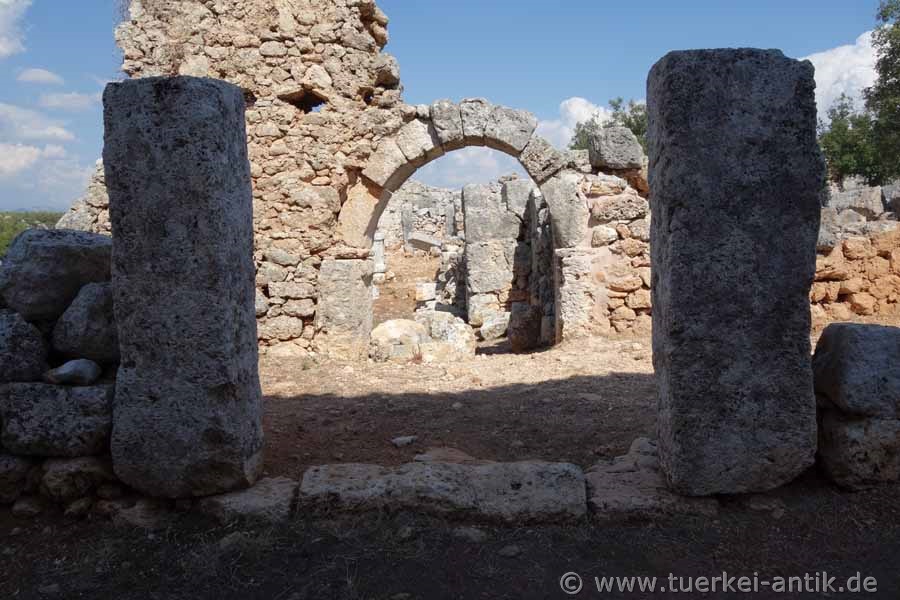 |
|||
| At the "Arete-Kulesi", the Artete Tower | |||
|
The production and export of olive oil formed the livelihood of Lyrboton Kome. No other settlement in the region has as many olive presses as Lyrboton Kome. The entire settlement was organized as an oil production center. The oil mills are arranged as an integrated system with common use of cisterns. It seems that the olives from the olive groves of the area were collected and processed in Lyrboton Kome. |
|||
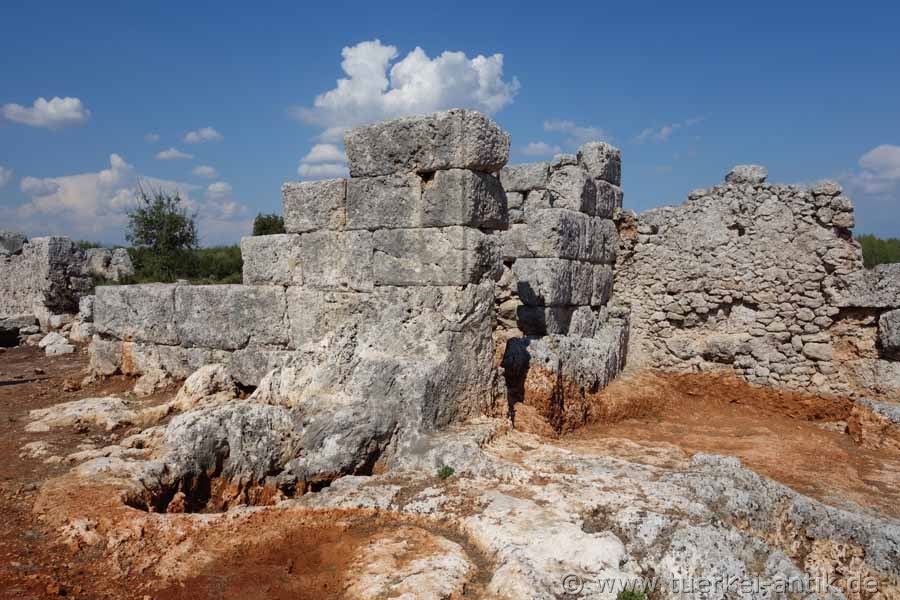 |
|||
| The "Arete Tower" | |||
|
Apart from the fact that olive oil was used in oil lamps of all eras, Lyrboton Kome probably experienced its most productive phase during the late Hellenistic and Roman period, when the precious olive oil was used in large quantities in grammar schools and baths. The 200-metre-long cart roads to the north, which are still visible today, indicate that the oil was transported on carts to the north to the Anatolian plateau, where the Roman legions were stationed in numerous small towns. The road led directly to Antioch in Pisidia and branched off from Apollonia to Apamea. Since no olives could be cultivated on the Anatolian plateau, the trade made the owners of the oil presses and oil mills of Lyrboton Kome wealthy and influential citizens of Perge. |
|||
|
|
|||
| Carriageway to the south | |||
|
|
|||
|
Way to the north |
|||
|
|
|||
|
Bath house |
|||
|
|
|||
|
The ruins of the building identified as a bathhouse (Hamam) are located on the main road running north-south, right next to the residential quarter. The partially preserved arched main entrance to the entire bath complex is on the side of the building facing the street. Except for the gap in the central part, the barrel vaults still stand. There only the beginnings of the former arch are visible. The vault and the two short sides of the central part have collapsed. A 0.60 m high water channel has been preserved near the southern corner. Although most of the surrounding walls collapsed, there was a corridor at the back and a passage between the units. |
|||
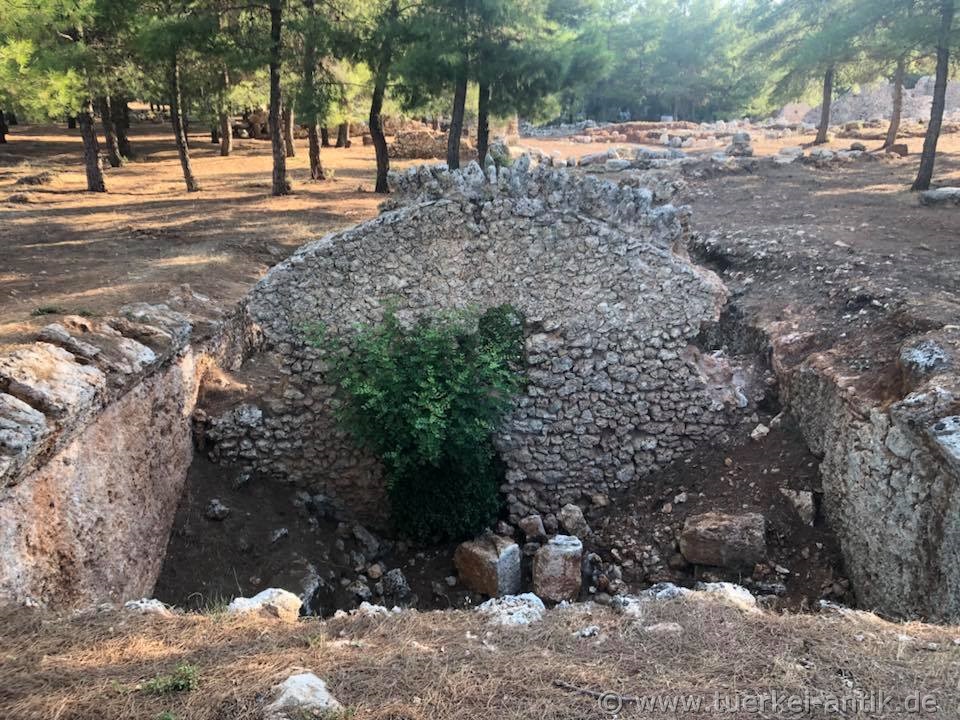 |
|||
|
Cistern behind the bath |
|||
|
In the northwest of the building there is a huge 19.90 x 5.40 metre cistern. It was completely carved out of the rock. A preserved wall on the front side and the lateral end edge show that the cistern was covered with a barrel vault. A component measuring 2.70 x 0.50 metres, preserved in situ, shows that the inflow was in the south-western corner. |
|||
| Fotos: @chim | |||
| Translation aid: www.DeepL.com/Translator | |||
| Source: Nevzat Çevık, An Olive Oil Production Center in Pamphylia: Lyrbotonkome | |||
|
|
|||

